
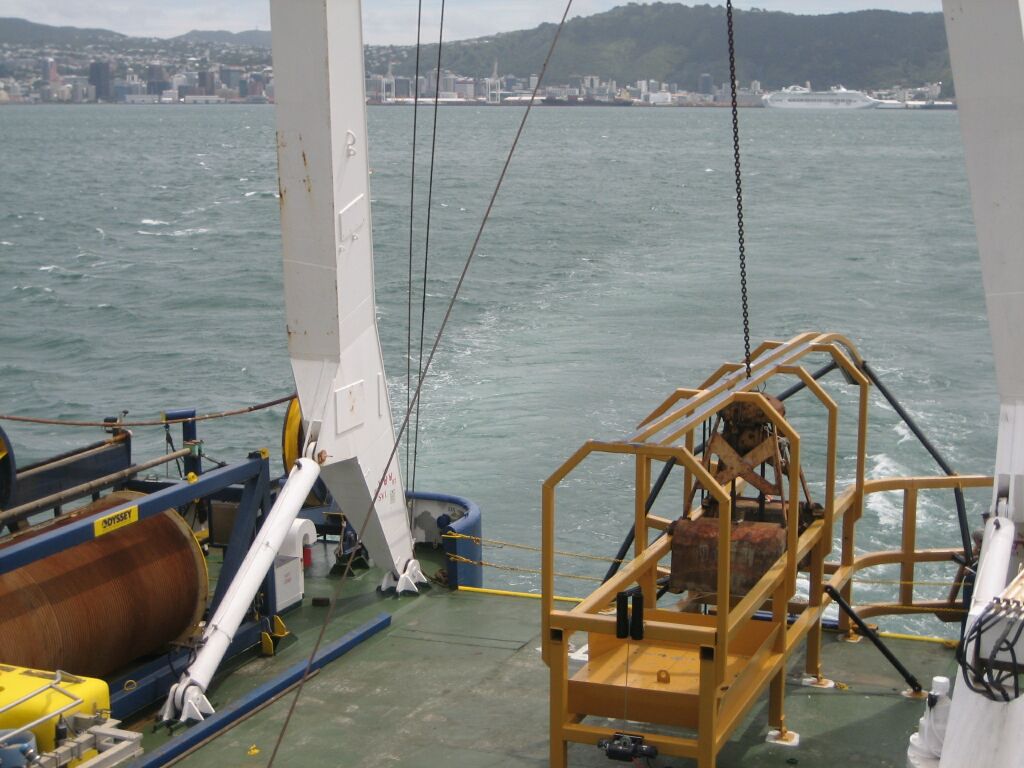
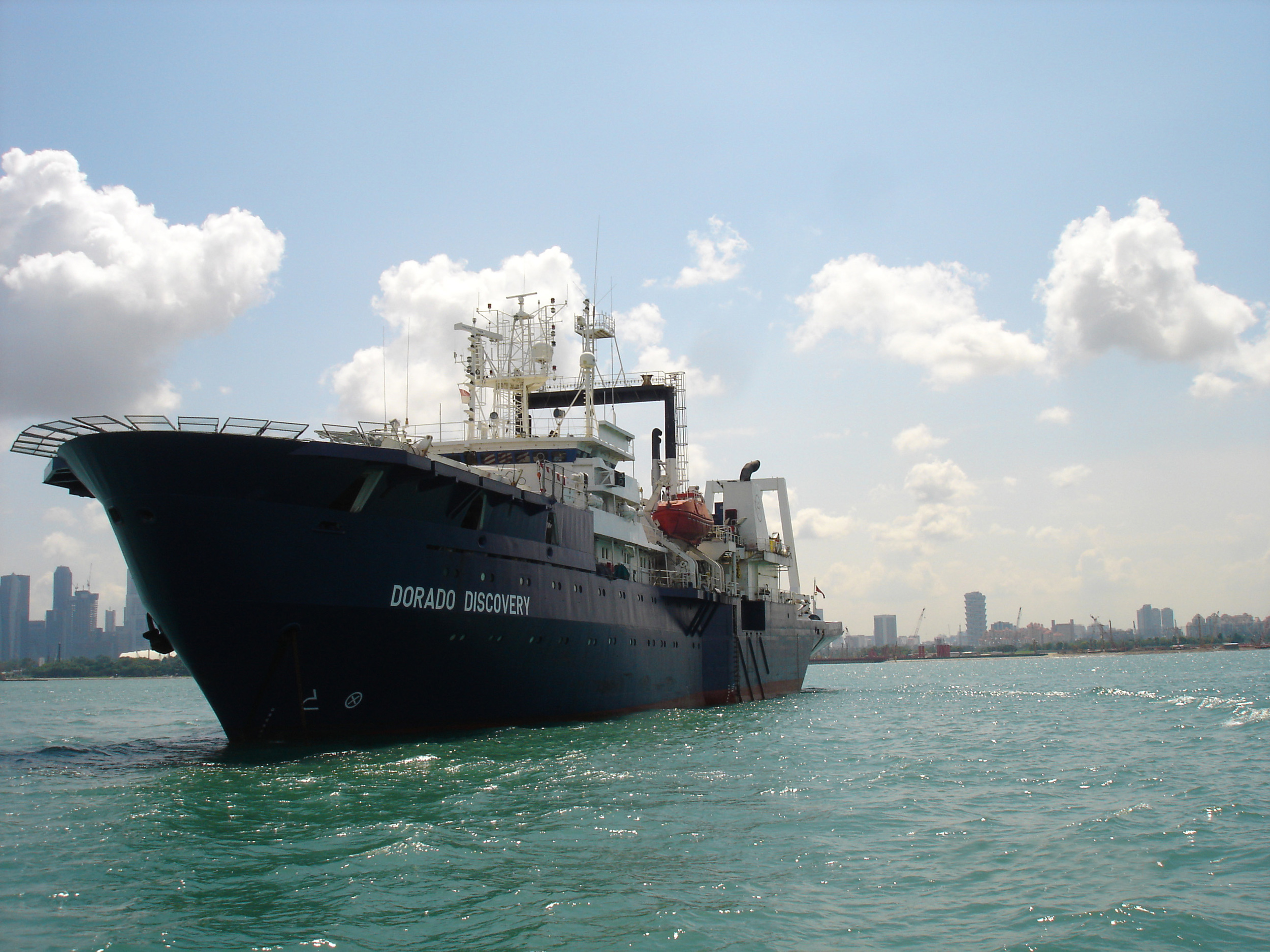

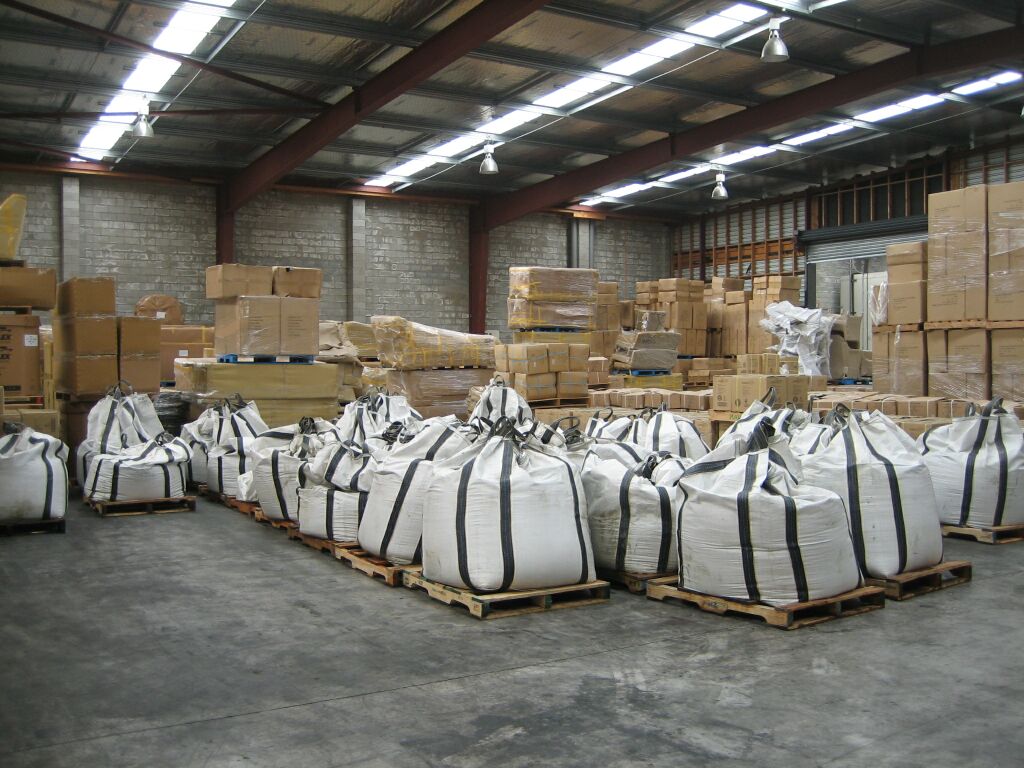

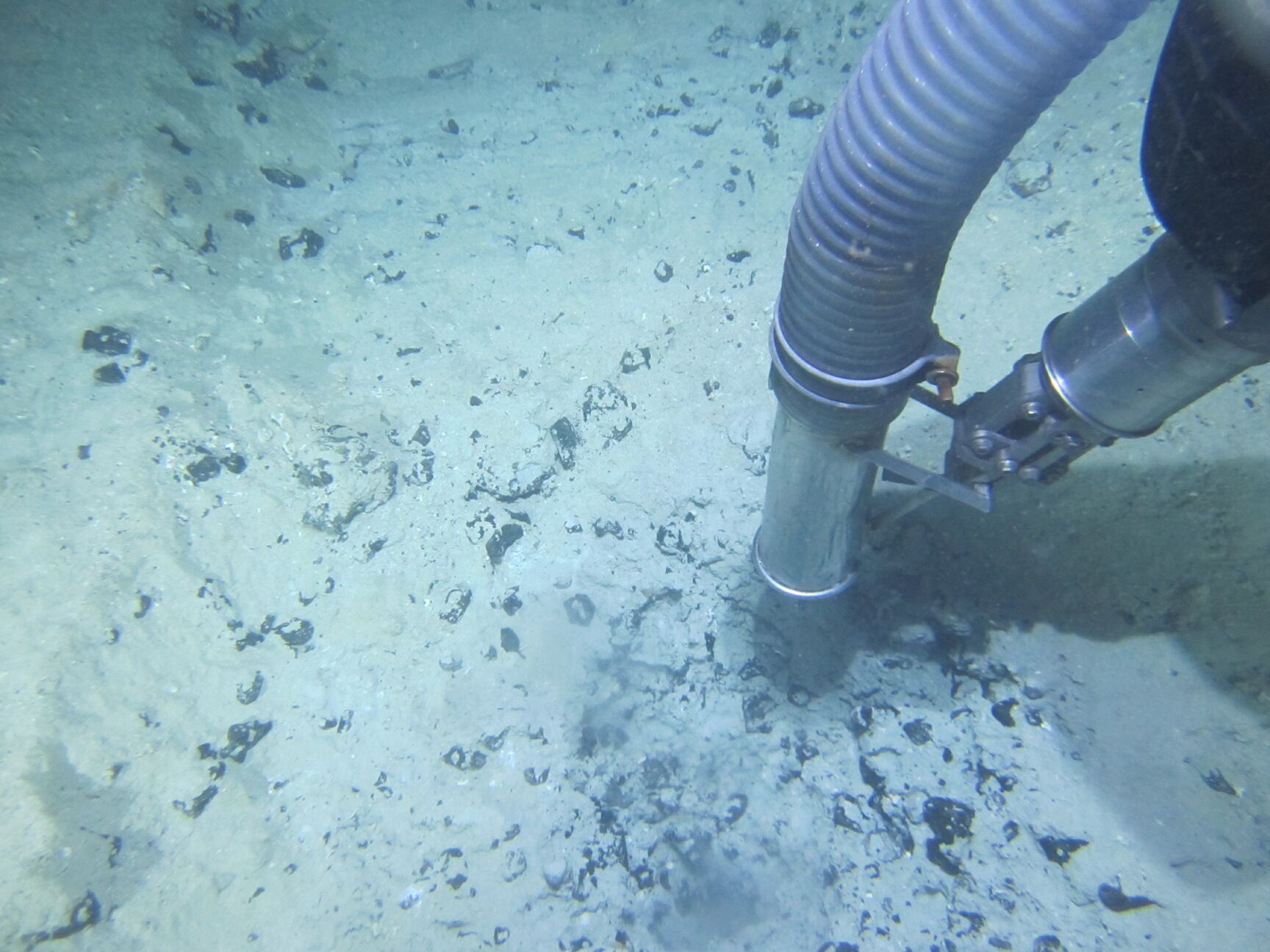
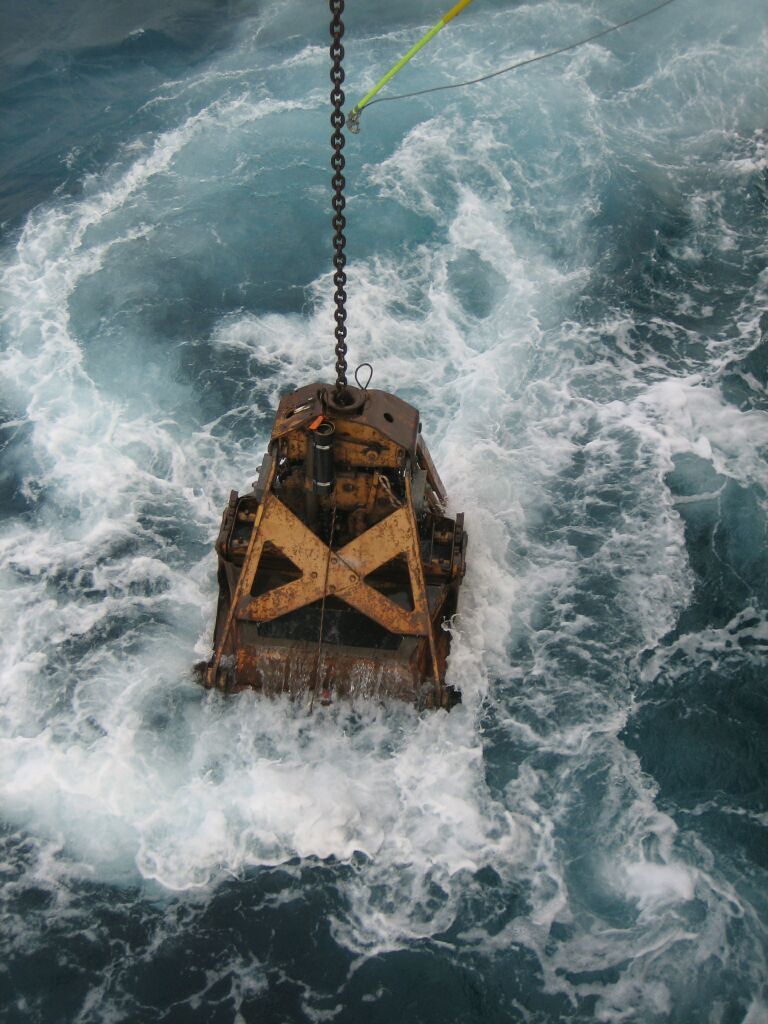
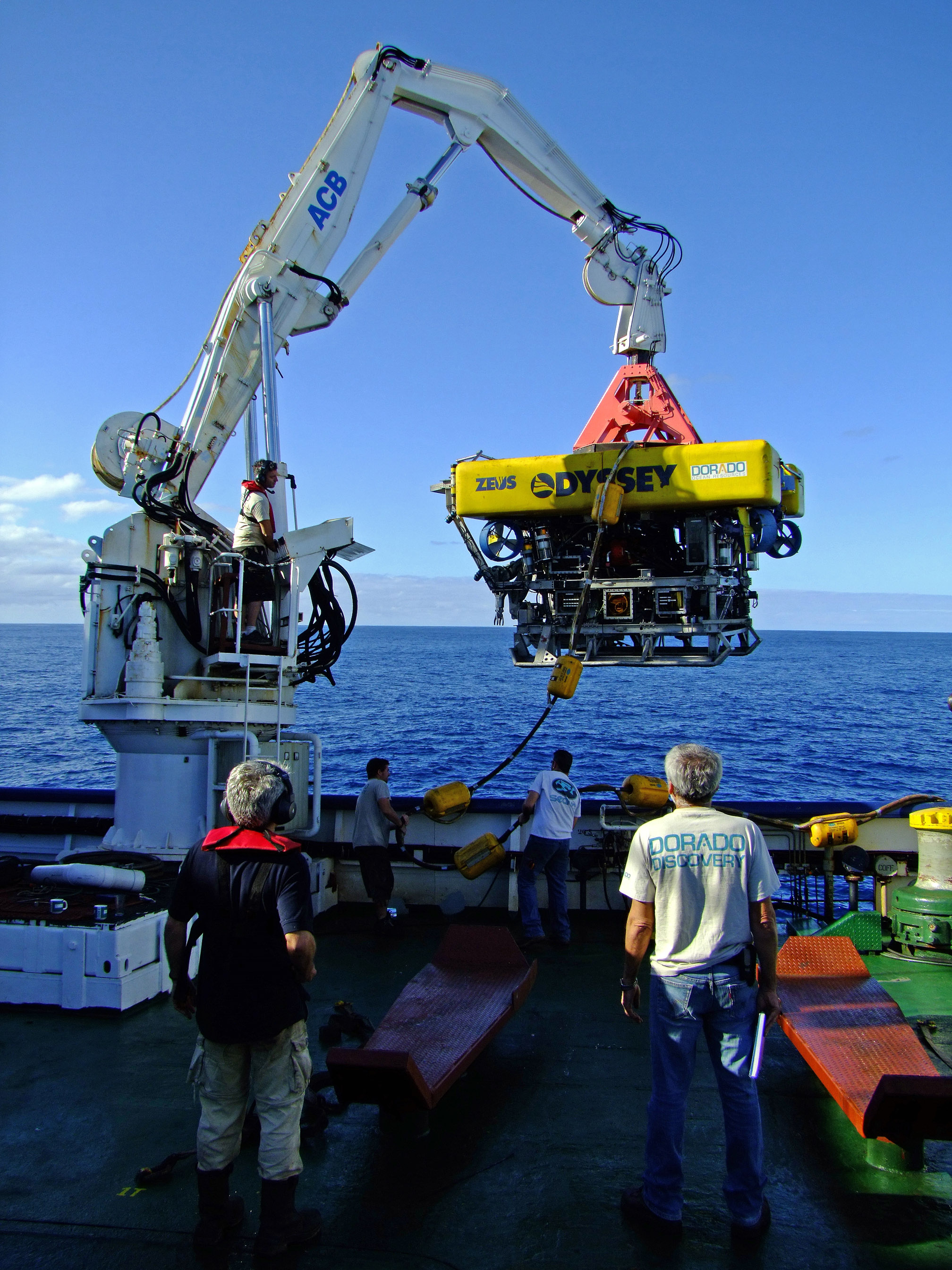
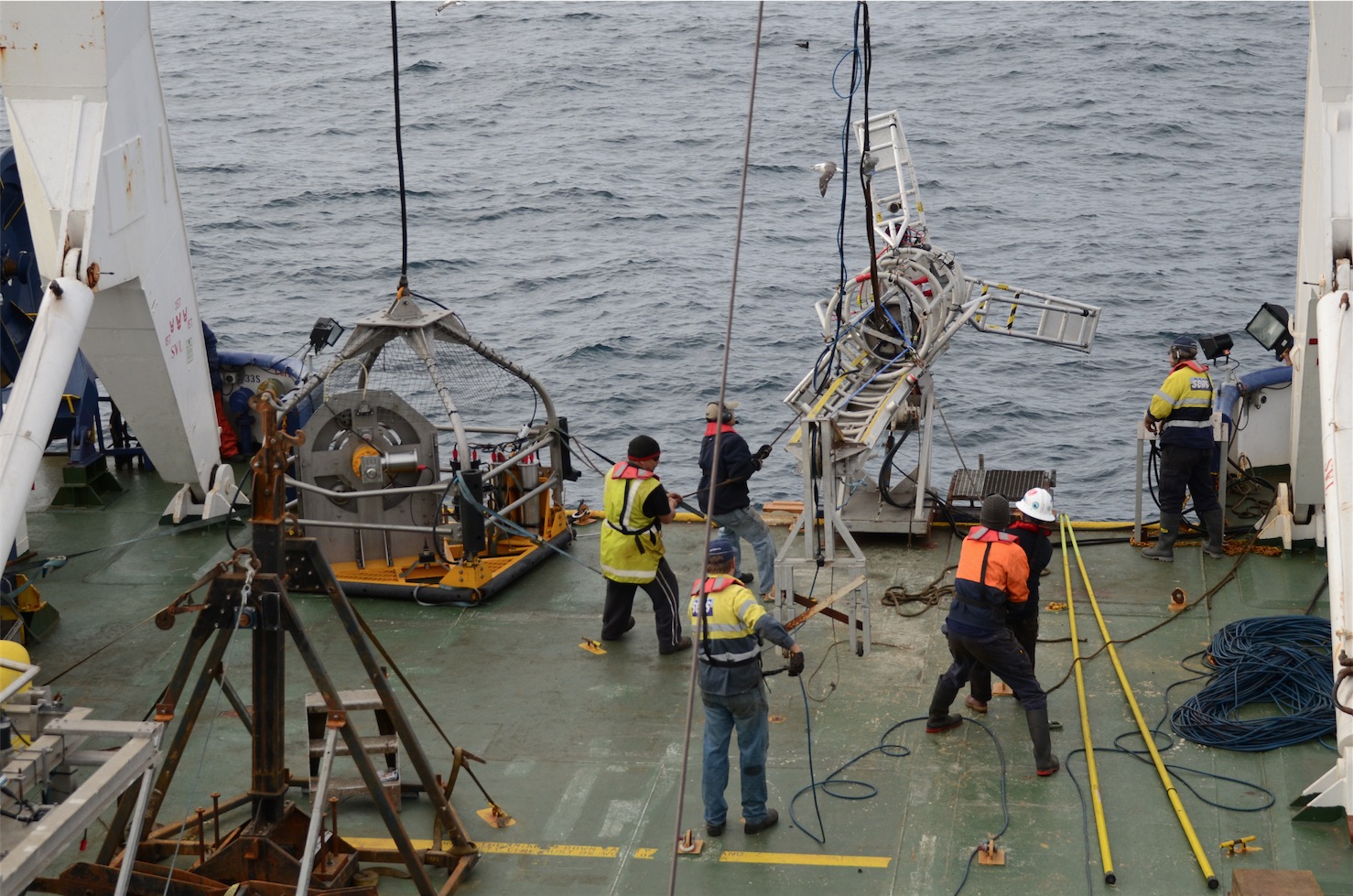
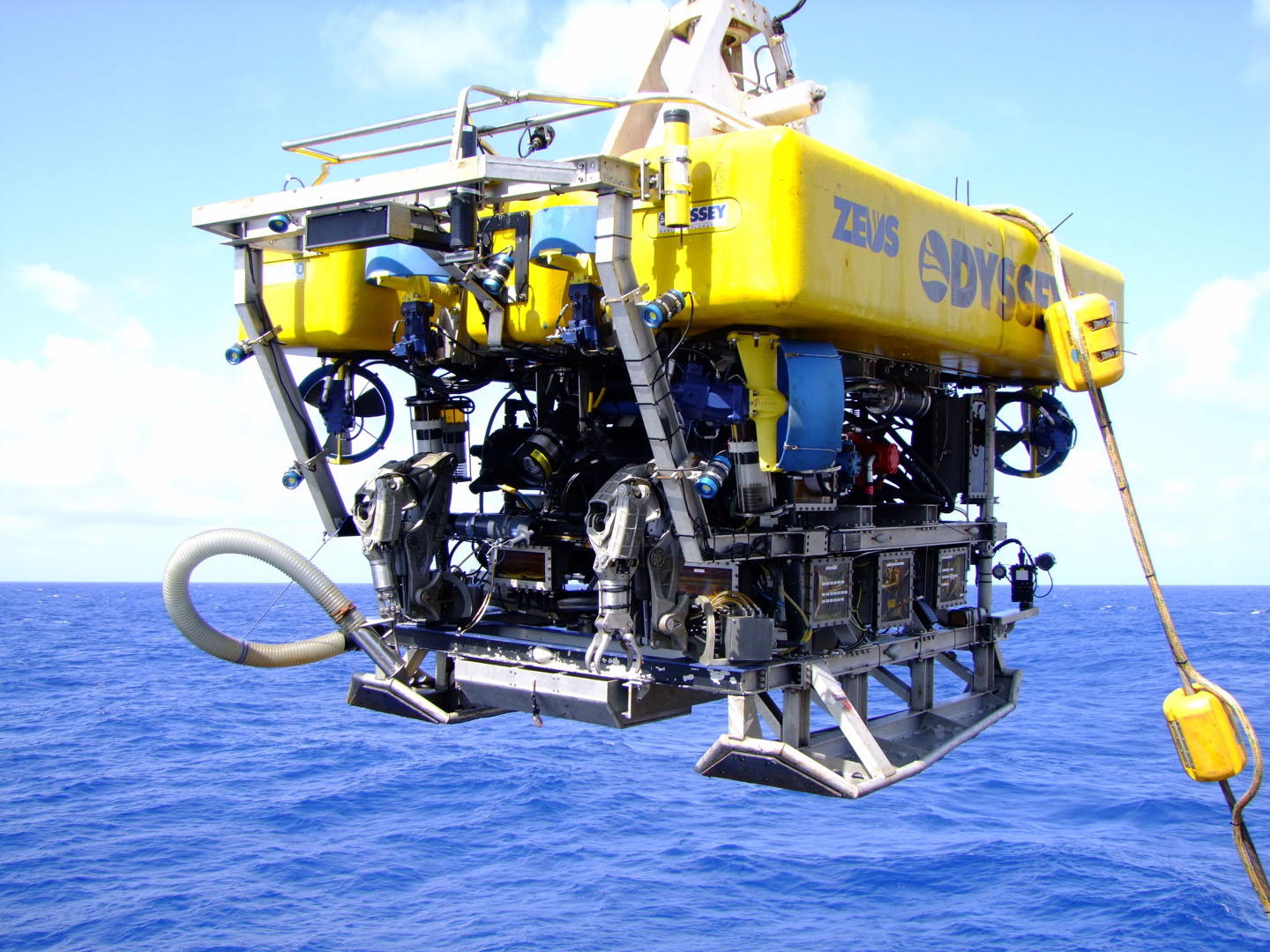
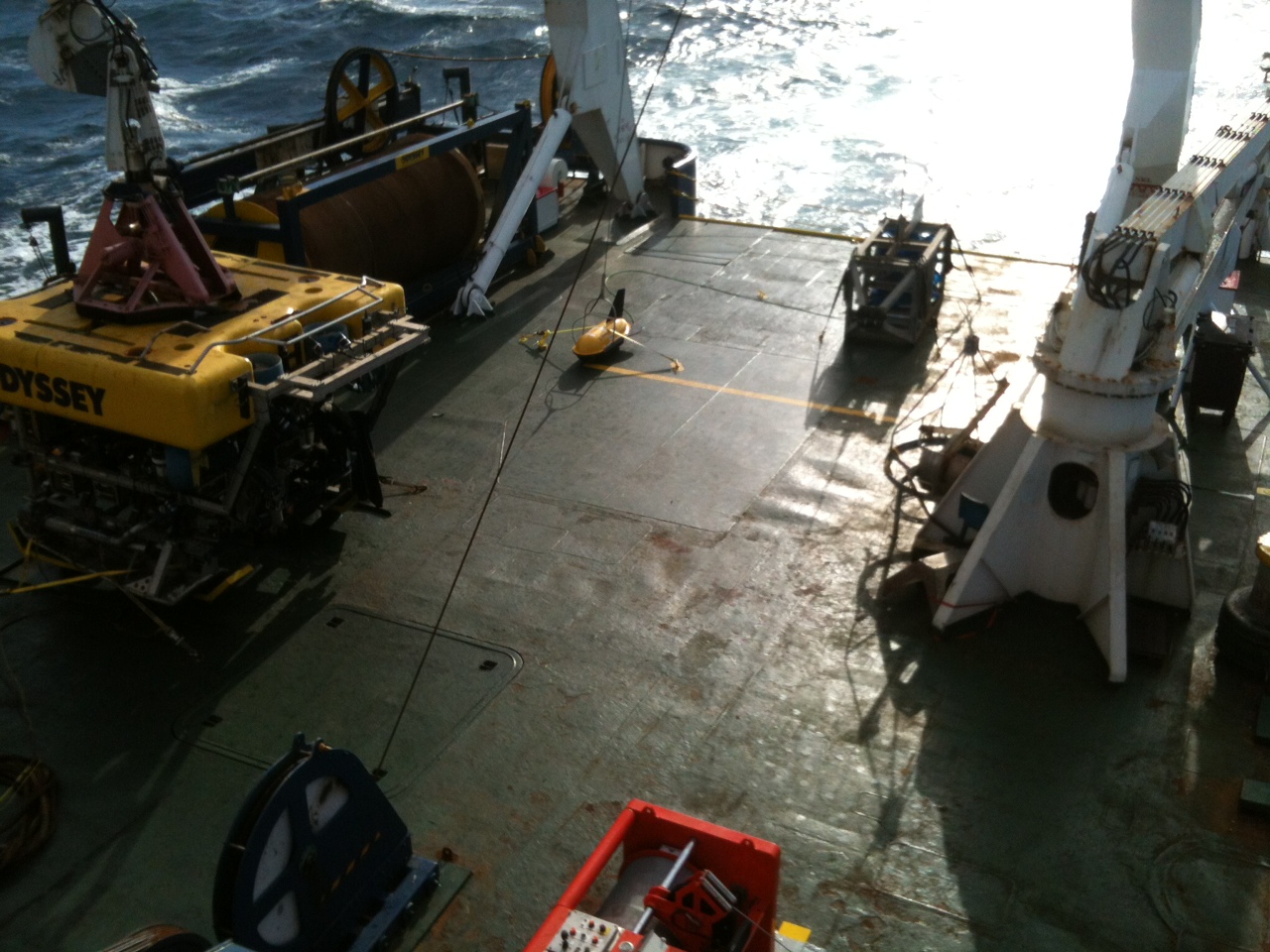
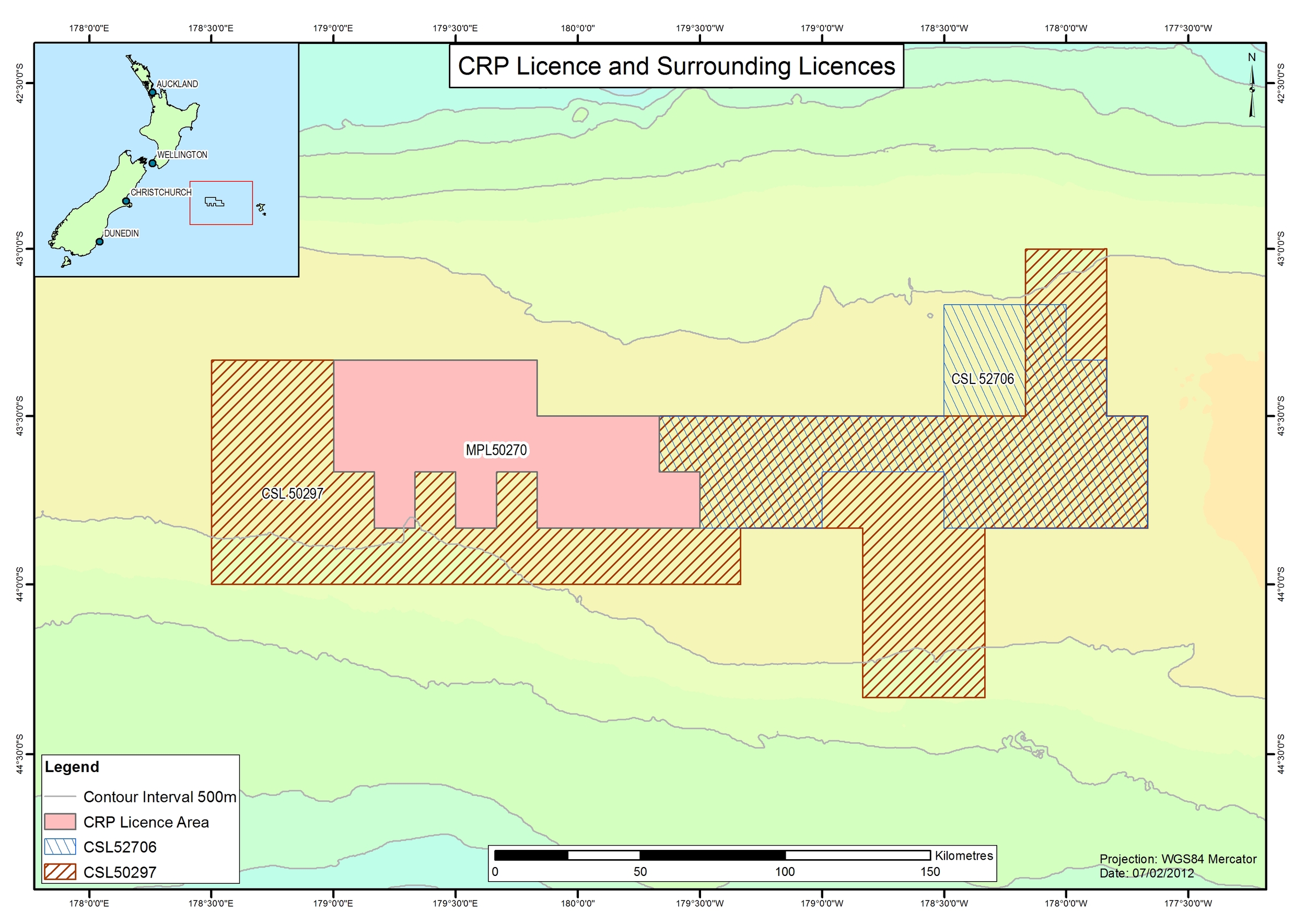
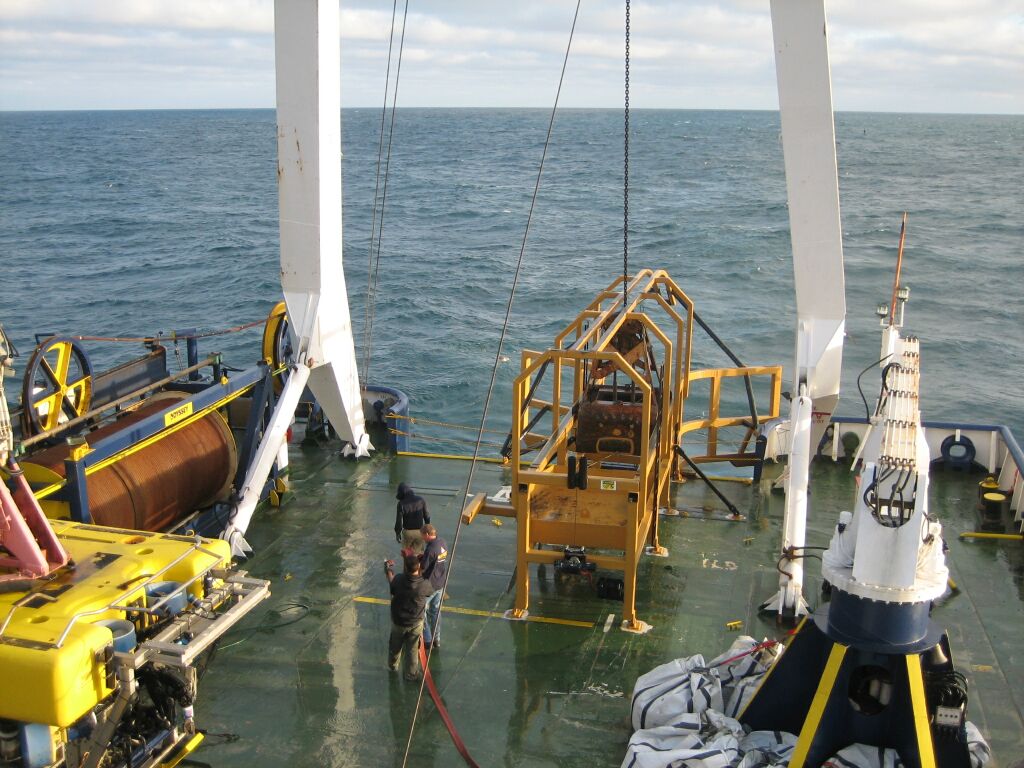




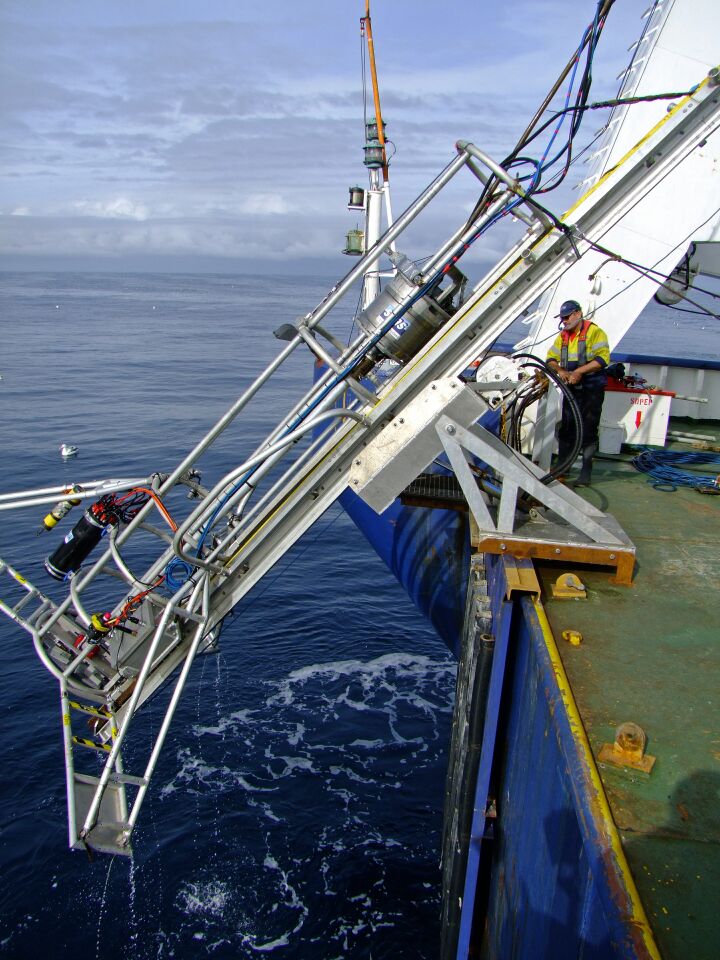
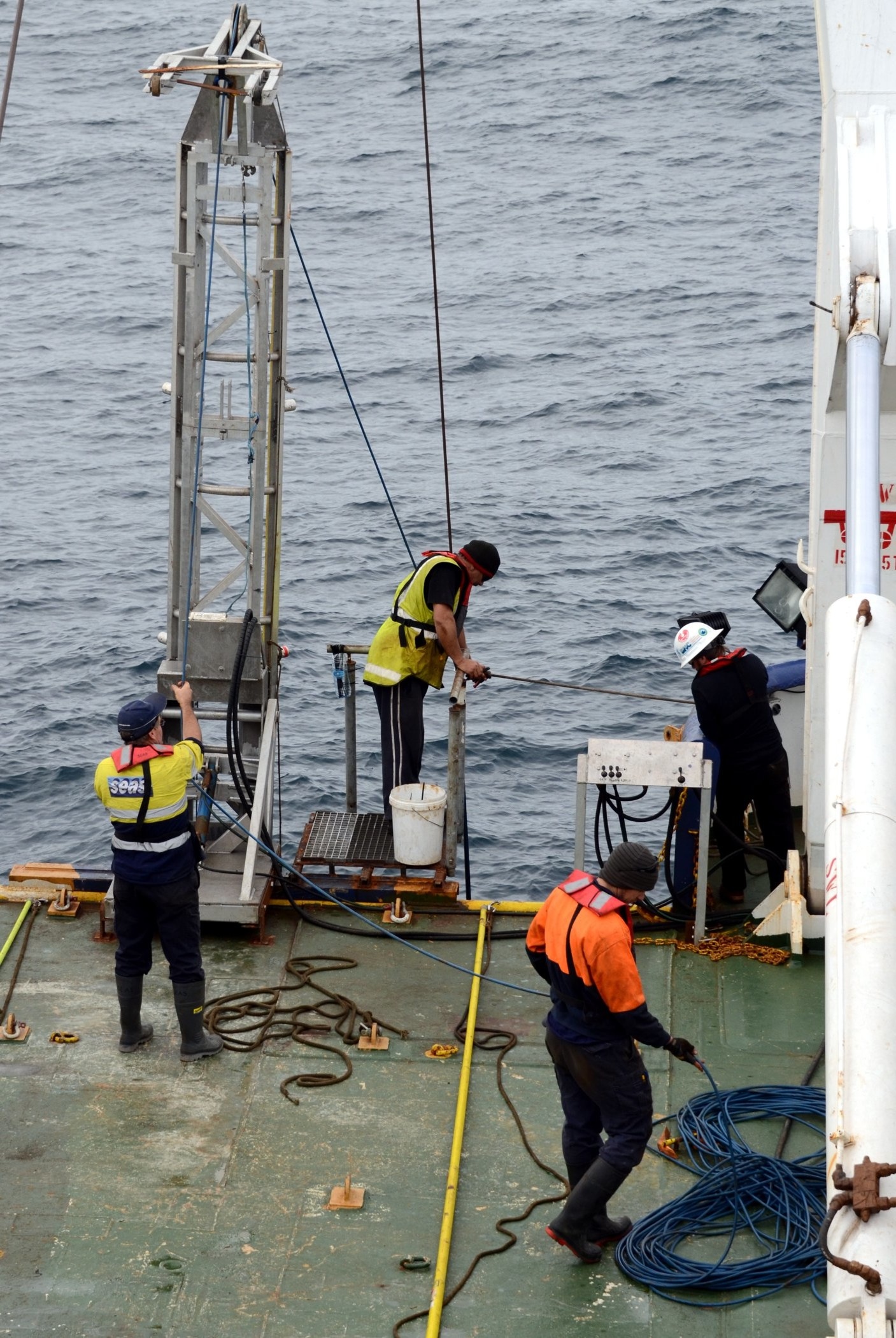
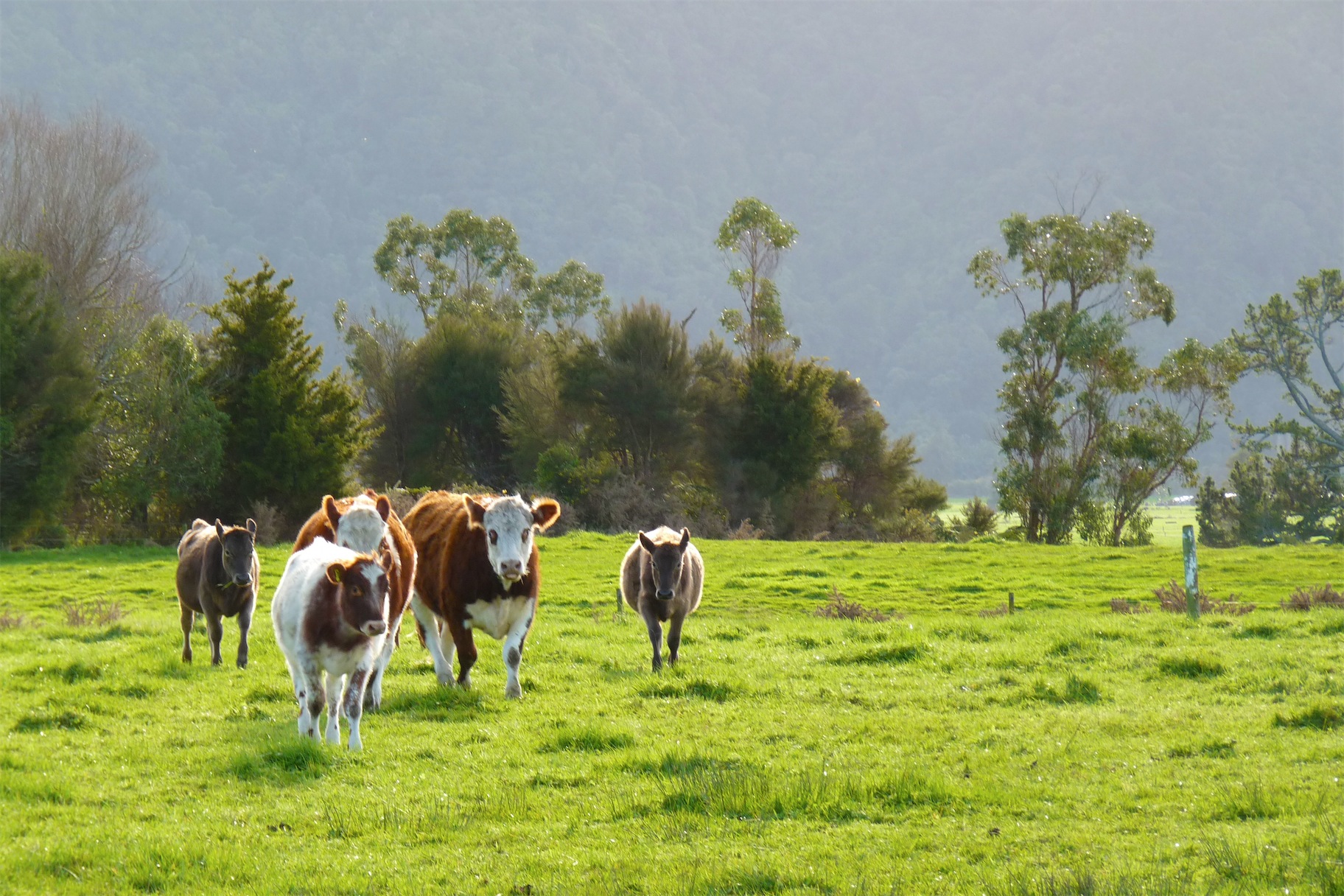
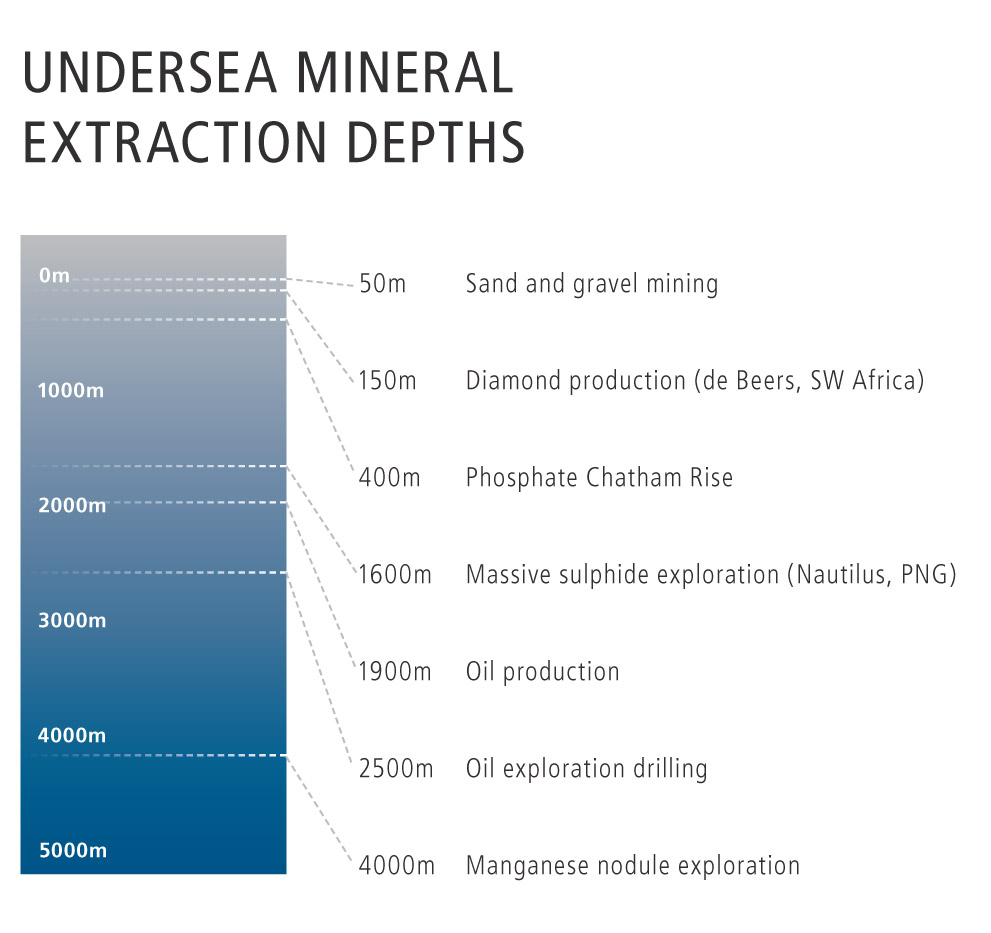


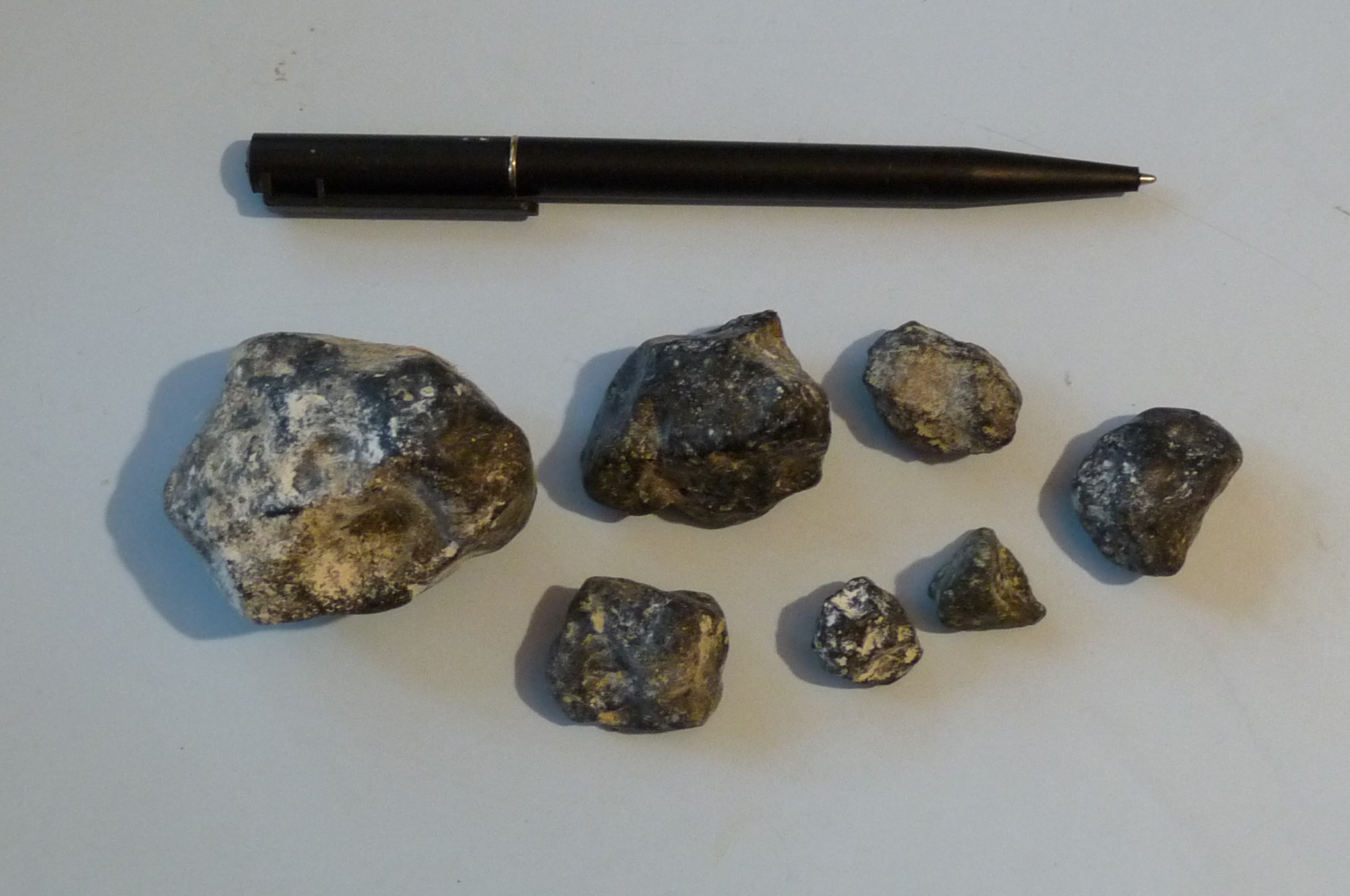

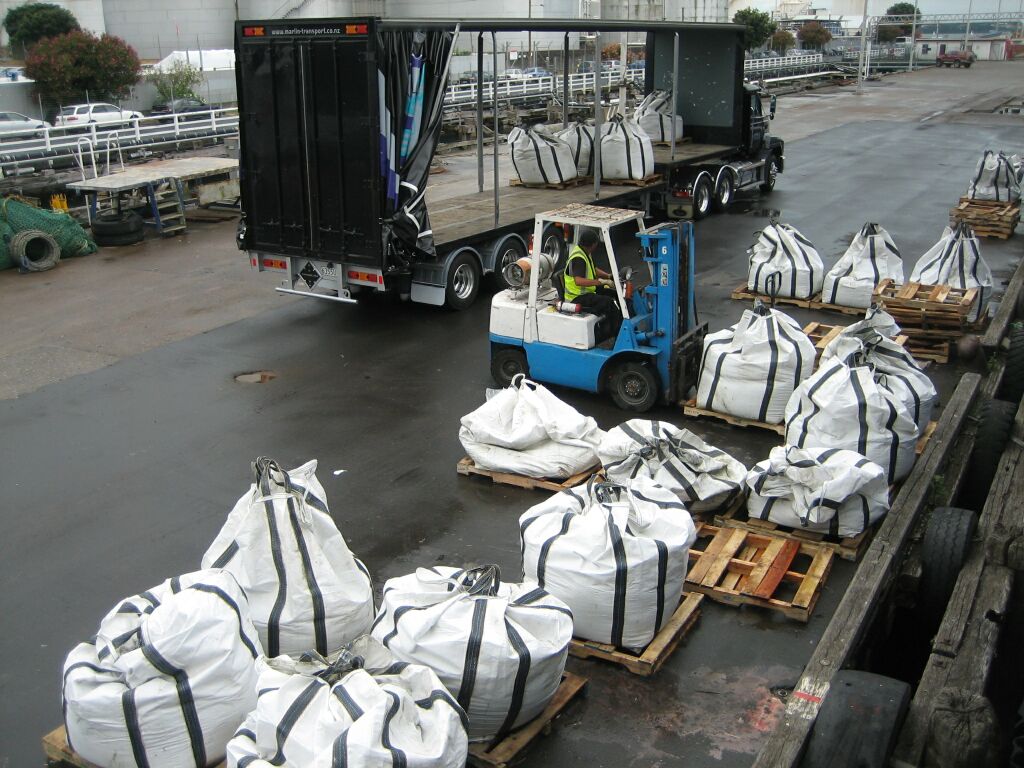
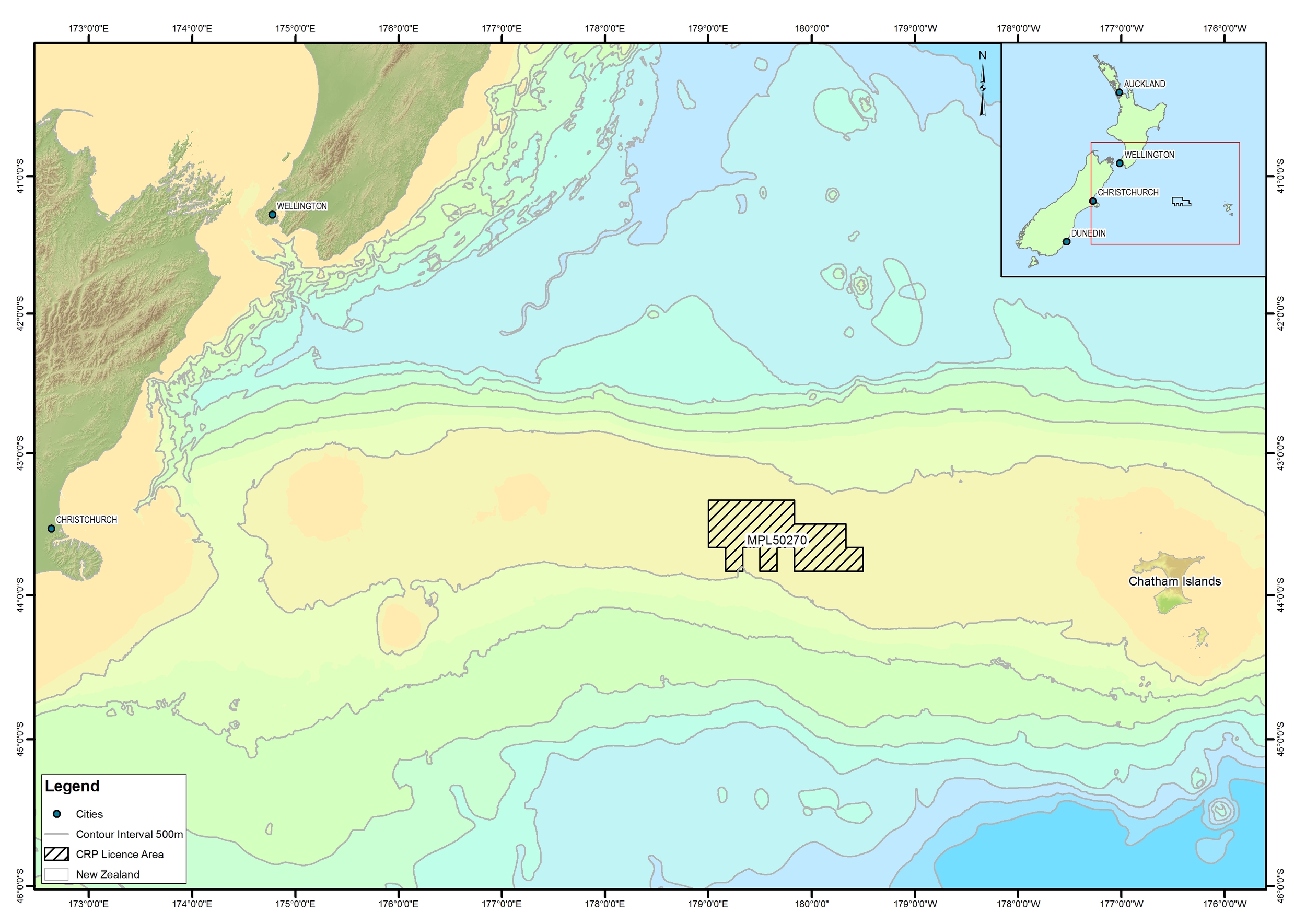
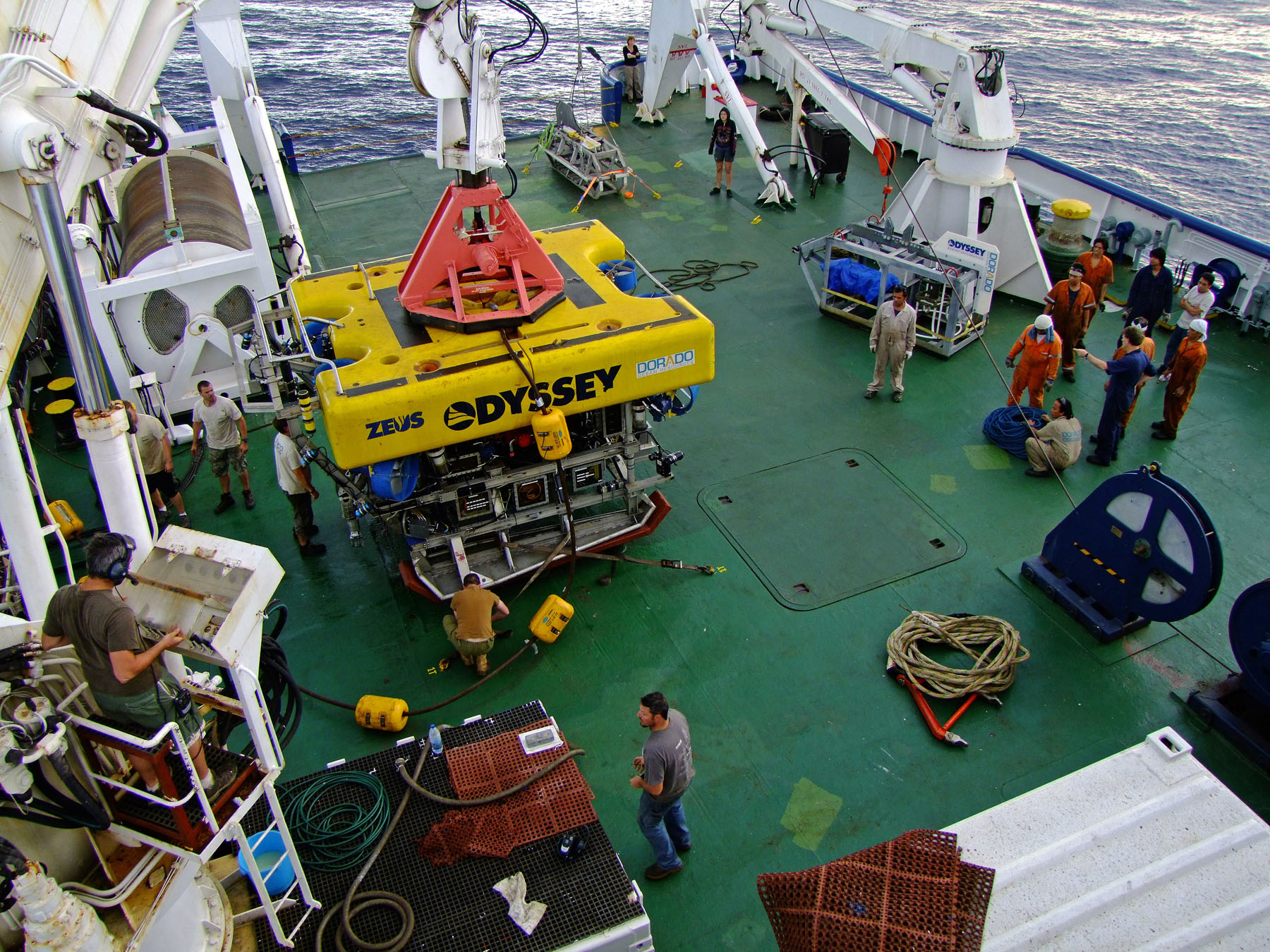
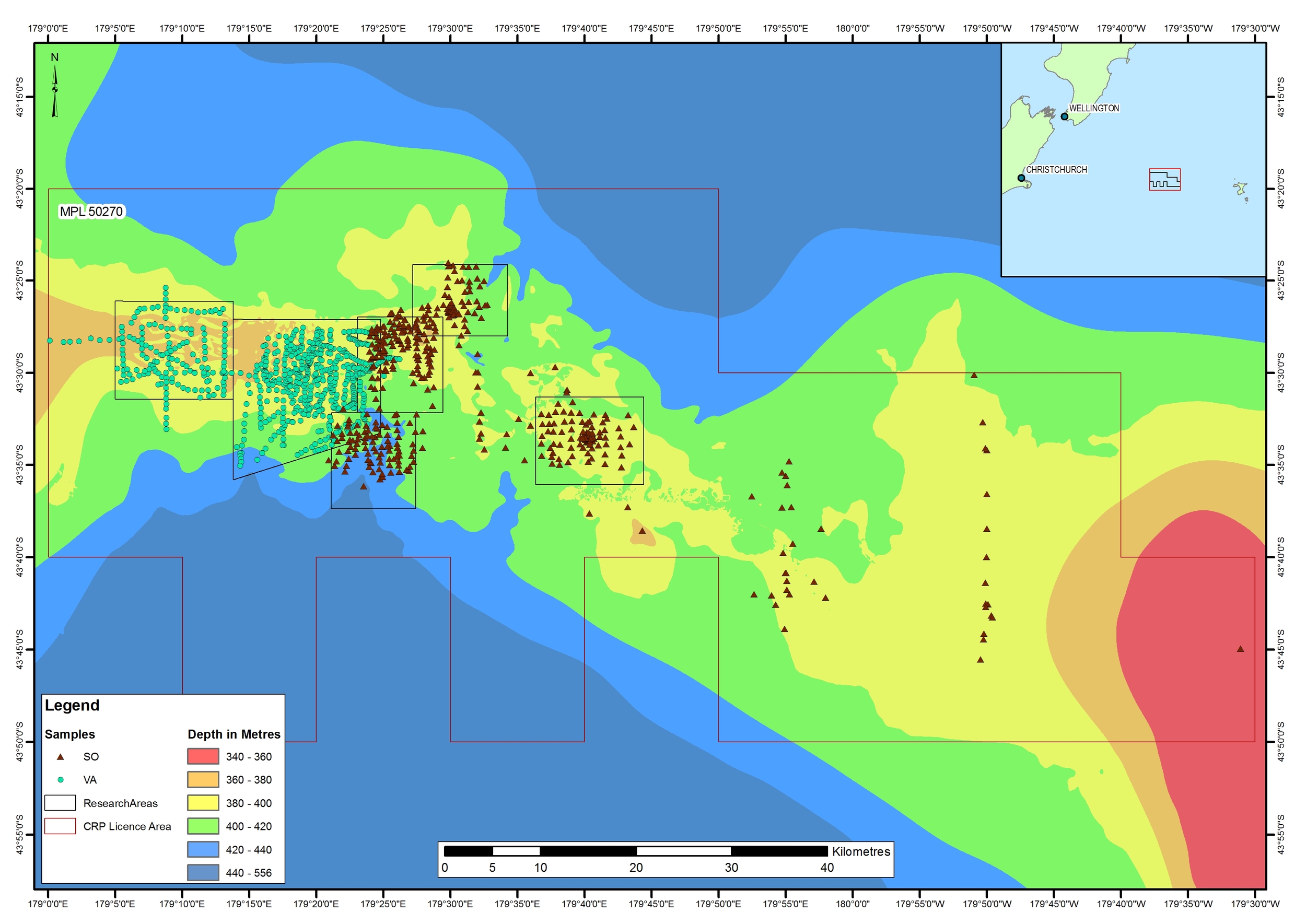

Chatham Rock Phosphate Ltd holds a mining permit over an area off the coast of New Zealand with significant seabed deposits of rock phosphate and other potentially valuable minerals.
The permit area of 820 sq km is 450 km east of Christchurch, at 400 m water depths on the Chatham Rise and in New Zealand territory.
Extraction of the rock phosphate would provide a locally produced alternative to the 1 million tonnes of this material annually used in New Zealand and primarily imported from Morocco, thereby reducing our carbon footprint as well as high transport and foreign exchange costs.
Rock phosphate is an essential ingredient of manufactured fertiliser and can (if of the appropriate chemical composition) be applied directly to pasture with less environmental damage from run-off than manufactured super-phosphate. Extensive exploration in the 1960s, 70s and 80s identified the potential for a 100-year supply for the New Zealand market. Recent substantial increases in the market value of rock phosphate and advances in offshore extraction technology mean it is now viable to harvest this resource. The deposits are comprised of nodules lying on the seabed and the relevant technological components for such extraction is used routinely.
Our work has focused on compiling and consolidating existing information and data pertaining to the Chatham Rise phosphate deposit and related marine environment, and acquiring significant additional data to fill in any information gaps.
We’ve produced a large range of reports on the physical environment of the Rise including bathymetry, geology, geomorphology, oceanography, seabed sediments and their chemistry, water properties and chemistry. Data used to understand the seabed environment include multi-beam echo-sounder bathymetric data, sidescan sonar data, on-board ROV video logging of substrate and sediment grain size data from cores and grab samples.
Our Environmental Impact Report - click to download
contains more than 30 technical reports to support a 300 page summary. The reports include studies undertaken following consultation with stakeholders to either answer questions or concerns raised or to identify ways of mitigating any potential effects.
Key facts
Preliminary studies indicate the rock phosphate can be extracted using existing technology for much less than the cost of buying and importing it from Morocco.
Successful extraction could result in a much reduced carbon footprint from the New Zealand fertiliser industry as all rock phosphate is presently imported
Sourcing this resource locally would significantly improve New Zealand’s balance of payments by reducing imports.
Chatham Rise rock phosphate may be more environmentally friendly as a fertiliser where it is applied directly to pasture with previous Government studies indicating less subsequent run-off.
Chatham Rock Phosphate has the resources and potential fund-raising ability to finance the work programme to define the resource and complete financial feasibility.
Extraction of the resource would be conducted in accordance with the environmental guidelines published by the International Marine Minerals Society “Code for Environmental Management of Marine Mining”.
History
The deposit, formed 7 to 12 million years ago, was discovered by New Zealand scientists in 1952 and extensively explored during the 1960s, 70s and 80s by a range of private and public sector scientists. An estimated $75 million in current dollar terms was spent on at least 7 different voyages, each involving several weeks.
The data collected means the deposit is now very well defined. The best-sampled area of 380 sq km has an identified resource of 25 million tonnes.
Over the 30 years since the last serious exploration, extraction techniques have improved radically and extraction costs are expected to be substantially lower than the comparative cost of buying and shipping rock phosphate from the other side of the world.
Mineral extraction and construction is now routine in shallow seas. Even in the 1970s manganese nodules were being mined at depths 10 times greater than envisaged on the Chatham Rise. Nautilus Mining has estimated hard rock mining costs of $US50 to $US65 a tonne at depths of 2,000 metres and North Island iron sands are expected to be extracted from offshore deposits (at shallower depths) for $US4 to $US15 a tonne.








 +64 21 5581985
+64 21 5581985 chris@crpl.co.nz
chris@crpl.co.nz PhosphateKing
PhosphateKing